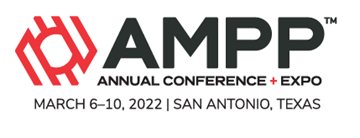Search
AMPP Conference Papers
View as
Sort by
Display
per page
Electrochemical Investigation of the Integrity of Cathodic Protection MMO Anodes in the Presence of Vapor Corrosion Inhibitors
Product Number:
51324-21177-SG
Publication Date:
2024
$40.00
Electrochemical Methods vs Long-Term Immersion Tests to Assess Localized Corrosion Tendencies of Corrosion Inhibitors (Phase II)
Product Number:
MECC23-20180-SG
Publication Date:
2023
$20.00
Electrochemical Noise vs. Salt Spray Tests: Is There Room For a Faster Corrosion Resistance Evaluation?
Product Number:
51323-18837-SG
Publication Date:
2023
$20.00
Electrodeposited Nanolaminar Zinc-Nickel Alloy Coatings – Analysis of Advanced Corrosion Resistance Performance
Product Number:
51323-19204-SG
Publication Date:
2023
$20.00
Elevated Temperature Effects of Hydrogen and Hydrogen-Containing Nitrogen-Based
Product Number:
51323-19291-SG
Publication Date:
2023
$20.00
Elucidating the Effect of Build Location and Powder Morphology on the Corrosion of Selective Laser Sintered Additively Manufactured 316L Stainless Steel
Product Number:
ED22-17456-SG
Publication Date:
2022
$20.00
Enabling Carbon Steel With A Special scCO2 Corrosion Inhibitor – A Field Study
Product Number:
51322-18205-SG
Publication Date:
2022
$20.00
Enabling Decarbonization through Conversion of Natural Gas Pipelines to Blended Hydrogen Service through a Nanocomposite Surface Treatment
Product Number:
51324-21204-SG
Publication Date:
2024
$40.00
Enhanced Oil Recovery: Localization of corrosion during polymer flooding
Product Number:
51323-18888-SG
Publication Date:
2023
$20.00
Enhancing Cathodic Protection System Design and Operation Efficiency by Numerical Modeling
Product Number:
MECC23-20032-SG
Publication Date:
2023
$20.00
Enhancing Material Integrity through Thin Film Advanced Materials Coating Application for Sweet Gas Wells
Product Number:
MECC23-20140-SG
Publication Date:
2023
$20.00
Enhancing The Reliability Of Ageing Assets In Utility Plants Though The Application Of RTR
Product Number:
51322-17881-SG
Publication Date:
2022
$20.00












